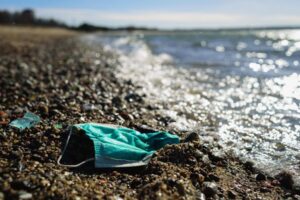As the first line of defence against the COVID-19 virus, the World Health Organisation has recommended basic water, sanitation and health services (WASH) such as washing your hands with water and soap as essential in preventing viral spread.1 However, with differing levels of water security across the globe this most simple of practices is not an option for many people. Further to this, water security issues have made their way to the forefront of the world agenda in recent times, with rivers and lakes comprising roughly 0.3% of the world’s freshwater, yet considered to be our ‘primary water source for human consumption’.2 With renewable water sources having reduced by 60% from 1950 to 2000, and the increase in water usage as a result of the COVID-19 pandemic by between 10-15%, it is expected that the situation in water-stressed countries will worsen.3 4 This article will take a look at different areas of the world and explore the problems various countries have encountered when trying to combat COVID-19 as a result of water insecurity. It will also briefly look at future problems and possibilities surrounding water governance.
One of the Sustainable Development Goals, an agenda detailing ‘a shared blueprint for peace and prosperity for people and the planet, now and into the future’ with a deadline of 2030, is to ‘ensure availability and sustainable management of water and sanitation for all’.5 6 Despite this, United Nations Water estimate that 2.2 billion people do not have safely-managed drinking water, three billion lack basic handwashing facilities and as many as 4.2 billion go without safe sanitation services.7 In addition to this, nearly a billion people suffer from regular water shutoffs and partial access.8 With 60-80% of communicable diseases, such as COVID-19, being attributed to ‘limited access to safe water and inadequate sanitation and hygiene services’. The Lancet has called the lack of access to WASH facilities a ‘critical public health issue’, with the United Nations Human Rights Council pointing out that the struggle against COVID-19 ‘has little chance to succeed’ if these facilities are not available to all.9 10 11 UNICEF have also pointed out that in the 60 highest-risk countries for COVID-19, two-thirds do not have access to basic handwashing facilities or soap and many are the most vulnerable in society living in informal settlements such as migrant and refugee camps.12 13
Regionally, in sub-Saharan Africa, nearly 63% of people in urban areas, where high infection rates are more likely to occur, report finding it hard to access basic water services.14 In Ethiopia, only 8% of households have access to soap and water, with roughly 51% having unreliable access to handwashing facilities including soap and water and 41% having no hand-washing facilities at all. In the country, it is estimated that 31% rely on unsafe water for their daily needs and 28% have access to clean water but need to travel over 30 minutes to reach the source and/or experience overcrowding when getting the water, thereby increasing the likelihood of them contracting diseases such as COVID-19.15 A similar issue in Rwanda is found where only 5% have access to hand-washing facilities with soap and water. To combat the lack of access during the COVID-19 pandemic, both Rwanda and Ethiopia have temporarily increased access to hand-washing facilities through soap and water installations outside businesses, restaurants and public areas in order to combat the virus.16 However, even with the increase in hand-washing facilities, water-scarcity is still an issue in sub-Saharan Africa. Even before the increase in water usage brought about by the pandemic, Uganda was operating at a water usage deficit with peak water demand per day at 300 million litres and water availability of 240 million litres. The Ugandan government are in the process of expanding this water capacity with the National Water and Sewerage Corporation currently constructing a new water treatment plant that will increase the country’s water capacity by a further 240 million litres a day, but whilst construction is underway many households are finding themselves to be water-stressed at a time when the need for water is even more essential.17
The issue of water shortages has also been a big problem in Venezuela where protests over the scarcity of water, alongside cooking gas or electricity, comprised ‘half of Venezuela’s 716 demonstrations in April’ 2020.18 These protests have been spurred on by the fact that an estimated 4.3 million Venezuelan’s did not have access to WASH facilities according to the UN Humanitarian Response Plan for Venezuela, and a further report by the World Food Programme found that, between July and September 2019, 4 in 10 households encountered daily interruptions in their water supplies and 25% lacked sustainable access to safe drinking water.19 20 Perhaps more concerning is the situation in Venezuelan hospitals in which 70% reported intermittent water supply in 2019, and a massive 20% experienced no access to water at all. In an attempt to combat the water shortages in larger cities the government have sent trucks to bring water to the hospitals, however, it is estimated that a hospital would need 30 trucks daily to continue operations but would only expect to receive five water deliveries. Due to the unreliability of water access hospitals have reported high rates of infections that have originated within the hospitals, which has proven to only worsen the COVID-19 situation within the country.21 It is important to also note that water scarcity within households is an issue across the Americas, and not just contained to South and Central America. For example, in 2016 in the United States one in every 20 houses were unable to pay their water bills, resulting in them having their water supply shut off, and 20 million American’s currently live without running water, indoor plumbing or wastewater treatment facilities.22
In the Middle East and North Africa, the Institute for the Study of International Development at McGill University, Canada, found that 60% of the population in this region lived in highly water-stressed areas. Further to this, 74 million did not have access to proper hygiene facilities and 26 million were refugees or Internally Displaced Persons, both of which are at a higher risk of becoming infected with COVID-19.23 Several parts of the region are also dealing with unstable governments or ongoing epidemics, such as the cholera outbreak in Yemen, meaning that, in many cases, health infrastructures are unstable or already overwhelmed, and therefore unable to deal with the added strain of the COVID-19 pandemic.24 Multiple countries in the region also suffer from ongoing conflicts, or are in a post-conflict state, which the Head of the UN Peacekeepers, Jean-Pierre Lacroix, pointed out that these societies usually ‘lack access to basic infrastructure or social and sanitary safety nets’.25 Similarly, the International Committee of the Red Cross has stated that conflict-affected areas are at a heightened risk of COVID-19 outbreaks due to the short supply of resources, the close proximity of displaced persons and an overwhelmed health system.26 Further to this, armed groups have taken advantage of the essential need for water during the pandemic to gain a tactical advantage over an area, with one group in Libya cutting off a main water pipeline supplying an area around Tripoli, cutting off the water supply for more than 2 million people.27 This too has occurred in the conflict in Syria when Turkish and Turkish-backed forces took control of a water station in Northeast Syria supplying 460,000 people, including a city and three displacement camps. Since taking control of the water station the forces have interrupted the supply of water several times forcing UNICEF and other organisations to supply the area with water via trucks, which covered the residents minimum needs and in many cases did not leave enough for handwashing purposes.28
Whilst the COVID-19 pandemic has delayed successful implementation of Sustainable Development Goal six there are arguably reasons to be optimistic. One of these reasons, for example, has been the suspension of water bills for poor families as well as ceasing the practice of disconnecting water supplies for non-payment of bills.29 Although this has been predicted to cause a 15% reduction in revenue collections for utility companies it does give a glimmer of a more equitable world.30 However, during the world’s recovery from the pandemic water must be used sustainably. Post-COVID-19 agricultural activity is expected to increase exponentially and there is a fear that natural sources of freshwater could be drawn upon excessively and therefore undermine basic domestic needs. In the post-COVID-19 recovery, good and effective water governance will be critical for both the short and long term health of society.31 One way in which water governance can be more effective is through the utilisation of wastewater, 80% of which is currently being released, untreated, back into the environment. The utilisation of this wastewater has been described by UN Water as having the ability to ‘provide the double win of protecting communities and ecosystems against biological hazards while safely recycling water, energy, and nutrient resources’.32 It has also been predicted by the United Nation’s that just five years from now two-thirds of the global population could be living in areas categorised as ‘water-stressed’. This potential future has already been experienced by residents of Cape Town in 2018 who came close to a ‘day zero’ in which the city would run out of water and have since had to comply with strict water rationing.33 Countries across the world are already implementing programmes to shore up their water security positions with Kosovo starting a World Bank-backed project called ‘the Kosovo Fostering and Leveraging Opportunities for Water Security Program’ which will increase the country’s water capacity and improve their water security.34 Another World Bank-backed project was carried out in Cote d’Ivoire in 2018 after the country experienced water shortages and involved the building of two new water treatment plants, the creation of 20 new wells and the rehabilitation of 82 pumps in order to strengthen both the countries water capacity and security.35
In a recent report titled ‘Safer Water, Better Health’, the World Health Organisation estimated that improving basic WASH principles and facilities had ‘the potential to prevent at least 9.1% of the global disease burden and 6.3% of all deaths’, something which has become all the more apparent since the beginning of the COVID-19 pandemic.36 This coupled with UN Water’s statement that global water demand is increasing by 1% every year increases the potential for global tensions and possible conflicts over access to water and water security.37 Further to this, the 2020 Global Risks Report published by the World Economic Forum in January ‘ranked risks from water crises higher than either infectious diseases or food crises’ and predicted that all three would be seen at once in 2020.38 With all three crises being hugely influential on water security it is of critical need that good water governance is seen as a priority in the post-COVID-19 recovery.


